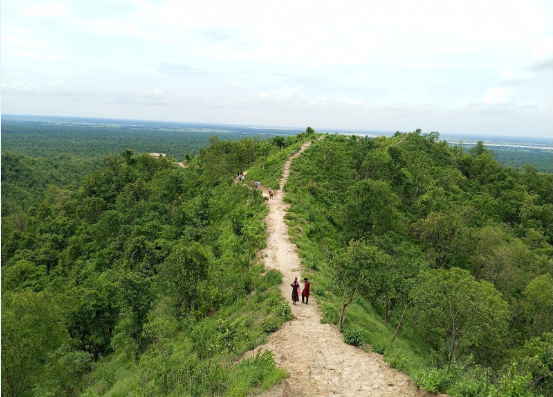The religious tourist sites in rural Banke district, including the renowned Santaneshwar, Baba Barfani, and Bhuvar Bhavani temples, are facing severe infrastructural challenges. Despite the increasing influx of visitors to these areas, basic facilities such as roads, electricity, and drinking water remain unavailable.
One of the most frequented sites is the Santaneshwar Temple, located in Narainapur Rural Municipality, where daily crowds gather for worship. However, visitors face difficulties due to the poor road conditions, lack of rest shelters, and absence of drinking water and electricity. According to the temple’s chief priest, Guru Yogananda Giri, the journey to the temple is difficult, especially during the rainy season, with no proper shelters for devotees during bad weather. He added, “In the hot summer, there is no drinking water for the devotees who walk long distances.”
The Santaneshwar Temple is approximately 30 kilometers from Nepalgunj, requiring visitors to travel six kilometers through rough jungle terrain by motorcycle, followed by a two-kilometer uphill trek. Despite its increasing popularity as a religious destination, the temple and the nearby Baba Barfani Temple in Rapti Sonari have inadequate road infrastructure, said Krishna Prasad Shrestha, the president of Banke Tourism Promotion Forum. “Banke has immense tourism potential, but investment in the necessary infrastructure, such as roads, water, and electricity, has been lacking,” Shrestha explained.
Efforts have been made to promote these religious sites through the concept of a “religious tourism route.” However, due to budget constraints, these plans have not yet been implemented, according to Krishna Bhusal, the chairman of the Madan Bhandari Religious Tourism Route Conservation and Promotion Committee. Bhusal stated that the route would connect various historic temples and religious sites in rural Banke, including Nepalgunj’s Bageshwari Temple and the Parijat Garden in Baijnath’s Gabhar area.
The proposed religious tourism route includes several key sites such as the Shiv Temple in Rapti Sonari Rural Municipality, Bhuwar Bhavani Temple in Baijapur, Baba Barfani Temple in Ward No. 4, Pokhara Mata Temple in Fattepur, and Santaneshwar Mahadev Temple in Narainapur. It will culminate at the Bageshwari Temple in Nepalgunj, with further extensions to other significant sites like the Kalika Temple in Kohalpur and the Mansarovar symbol in Baijnath.
Krishna Chaudhary, president of Gabhar Valley Community Homestay, expressed optimism about the route, saying, “The religious tourism route will give urban pilgrims a chance to visit rural areas and understand the local culture.” He added that including Gabhar’s Parijat Garden in the route will boost tourism for the entire region.
In support of these efforts, Surya Dhakal, a member of the House of Representatives for Banke’s constituency No. 1, announced that the government has allocated NPR 10 million for the current fiscal year to promote and preserve the district’s historic temples and religious sites. This budget will be used to construct the tourism route linking Nepalgunj’s Bageshwari Temple to the Parijat Garden in Baijnath, aiding in the preservation and promotion of these significant spiritual destinations.
With the development of this route, local leaders hope that the district’s rich religious heritage will not only be preserved but will also draw both domestic and international tourists to rural Banke, boosting the local economy and fostering cultural exchange.






